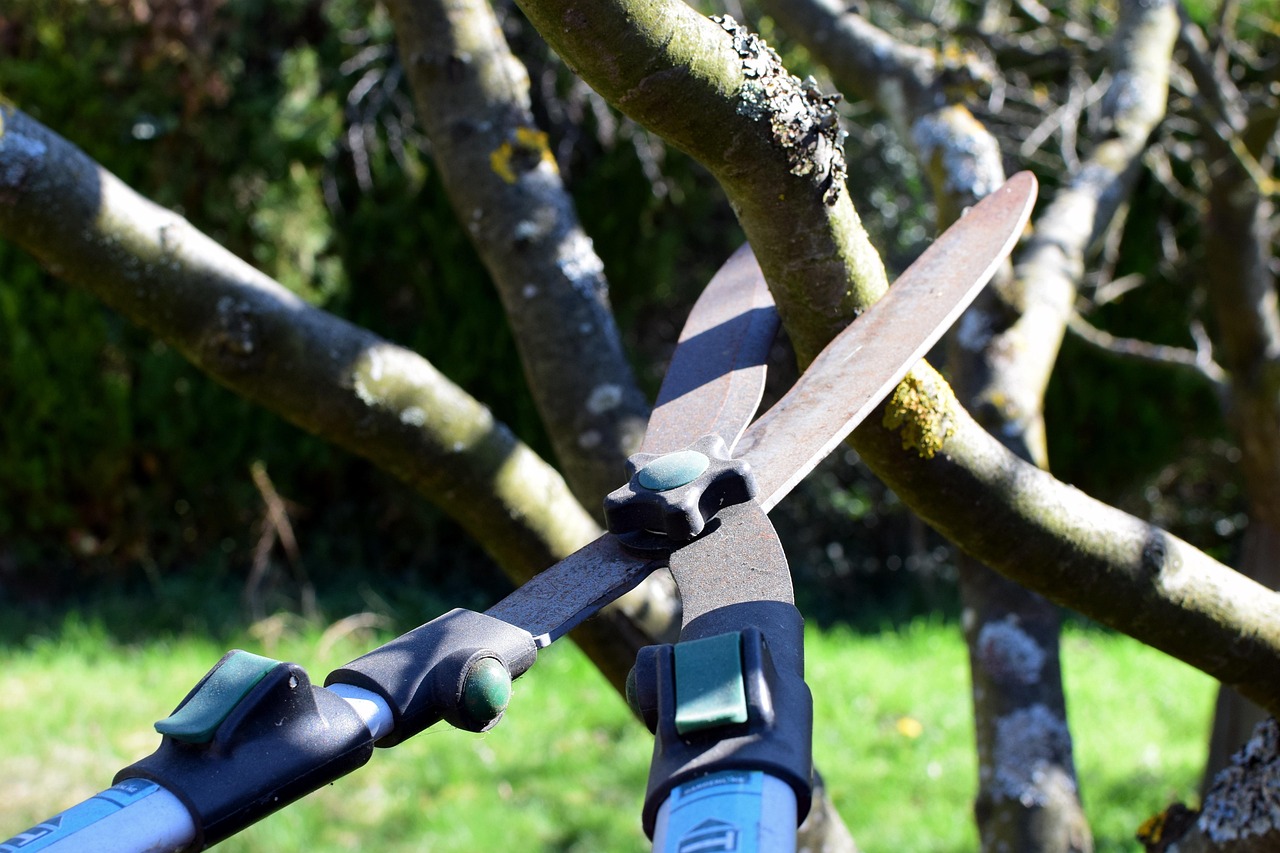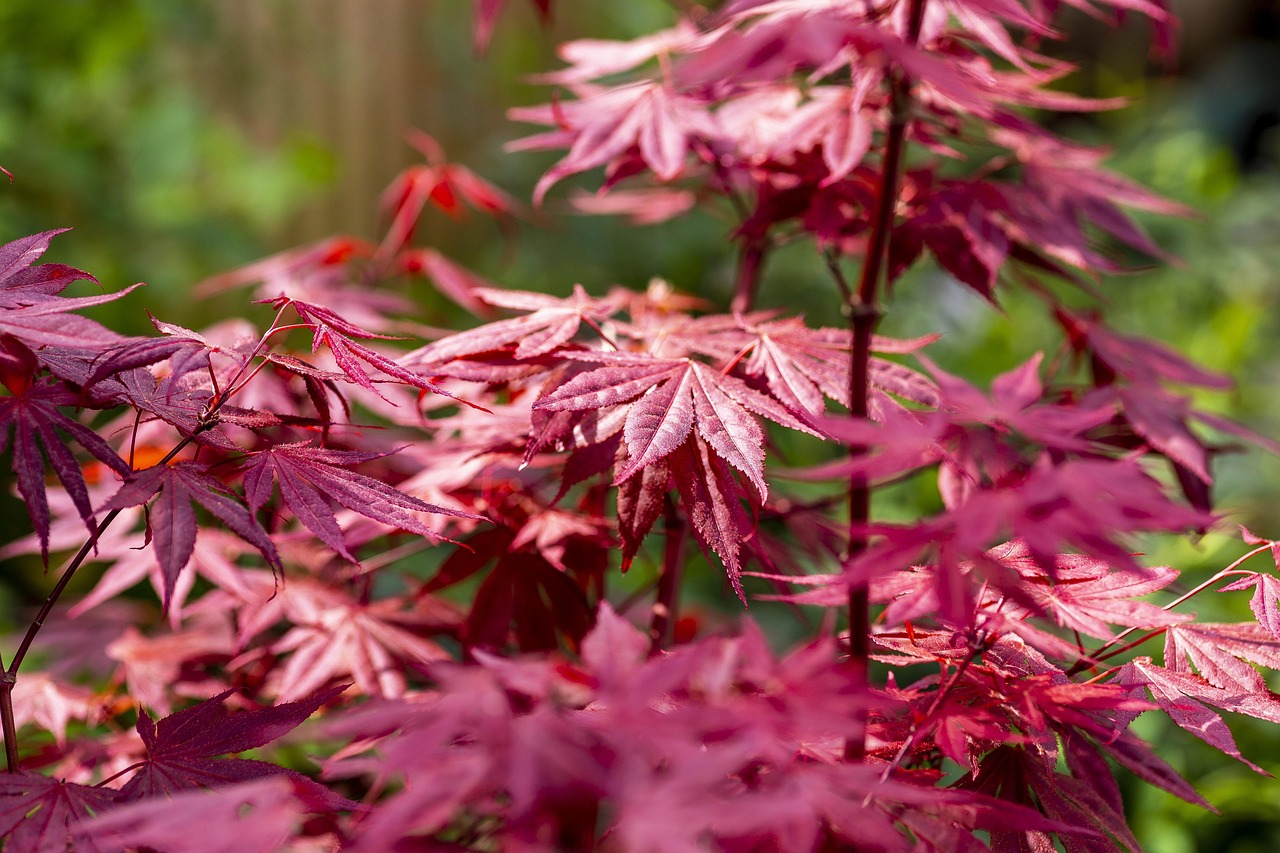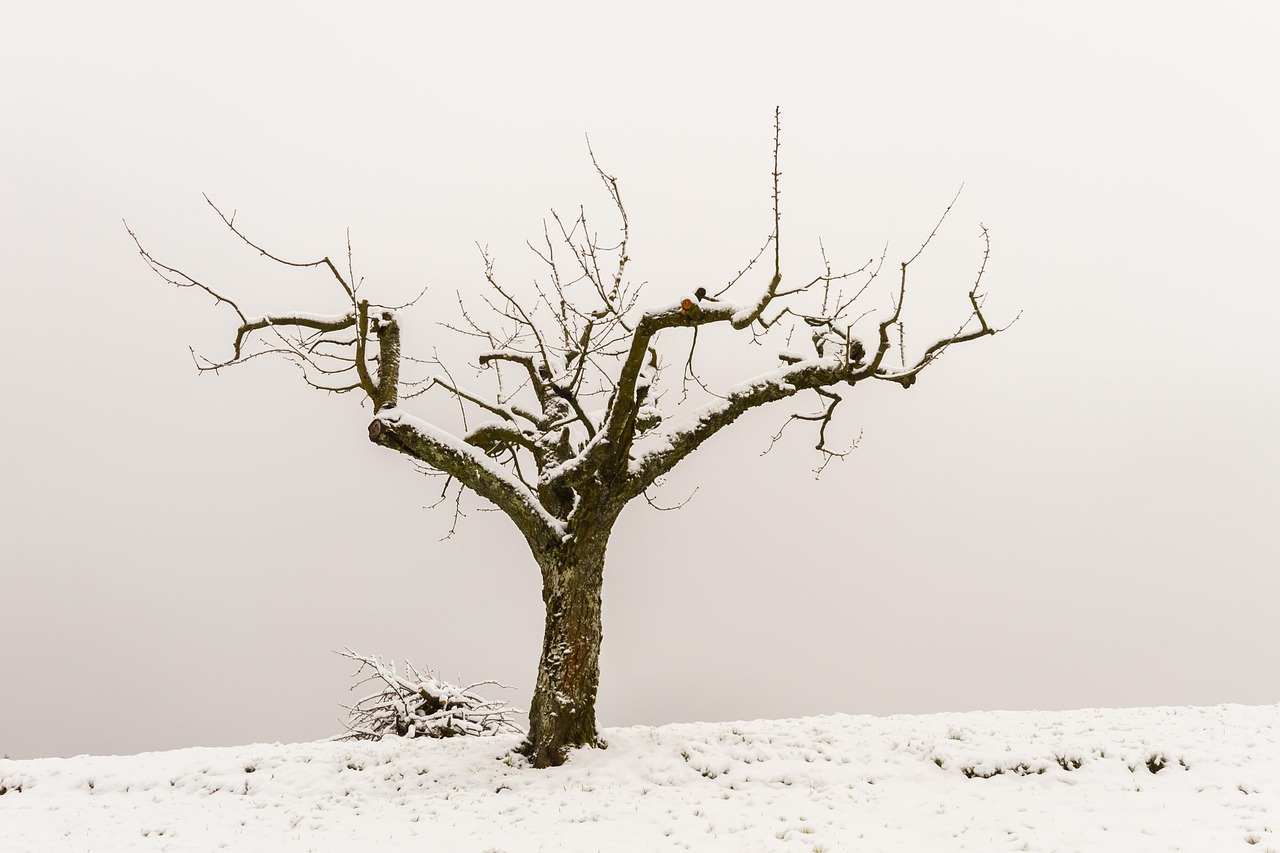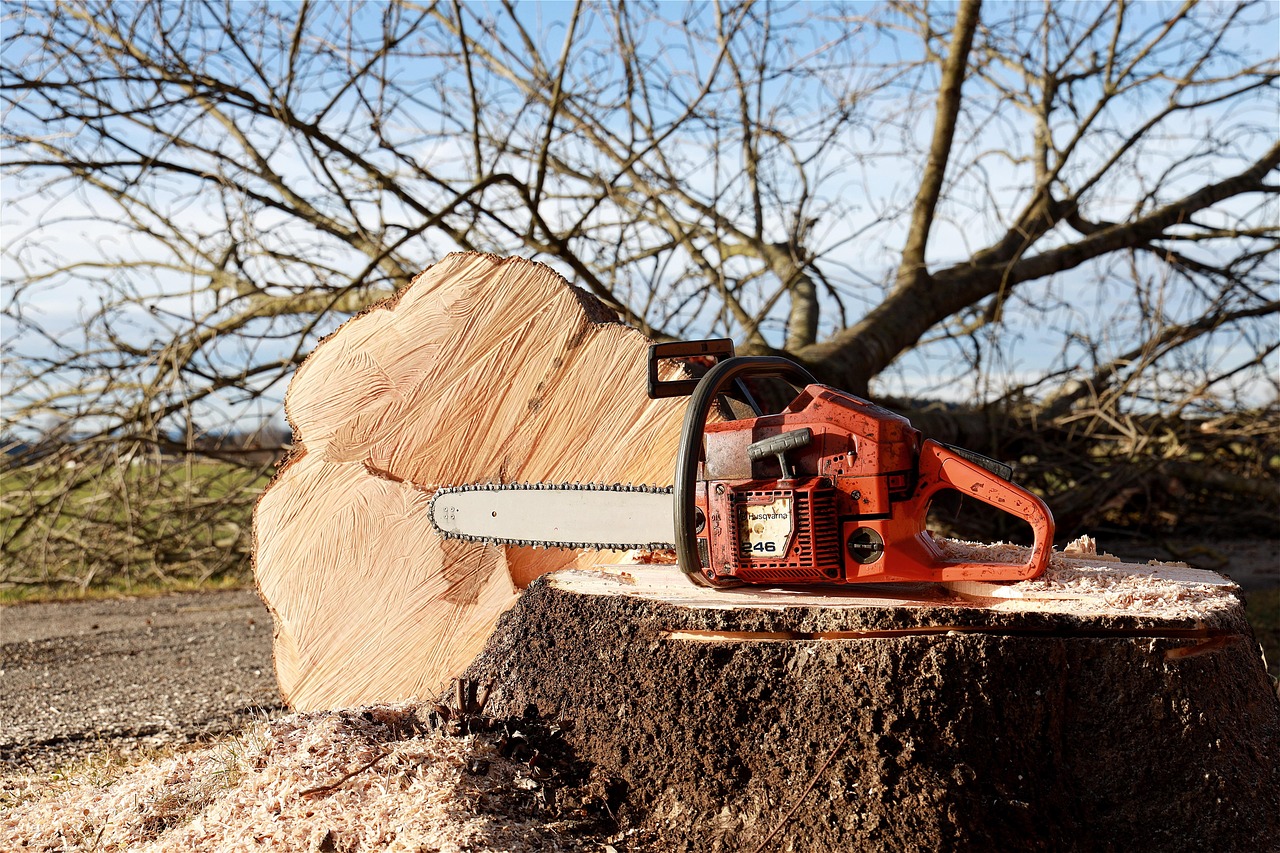Pruning acer trees is essential for promoting healthy growth and maintaining their shape. Proper techniques can enhance air circulation and sunlight exposure, leading to vibrant foliage and blooms. The best time to prune is during the late winter or early spring before new growth begins.
Acer trees, known for their beautiful foliage and unique shapes, require careful attention to pruning to thrive. These trees, commonly referred to as maples, come in various species, each with distinct characteristics. Pruning not only helps maintain their aesthetic appeal but also ensures their health by removing dead or diseased branches. Understanding the right techniques and timing for pruning is crucial for successful tree care.

In this guide, we will explore the key aspects of pruning acer trees, including the best practices, tools needed, and common mistakes to avoid. Proper pruning techniques can lead to healthier trees that produce vibrant leaves and flowers. Additionally, we will discuss the importance of understanding the specific requirements of different acer species.
Understanding Acer Trees
Acer trees are renowned for their stunning autumn colors and diverse shapes. They can be found in many gardens and landscapes around the world. Here are some common species of acer trees:
- Acer saccharum (Sugar Maple)
- Acer rubrum (Red Maple)
- Acer platanoides (Norway Maple)
- Acer japonicum (Japanese Maple)
Each species has its unique growth habits and requirements. For instance, the sugar maple is known for its impressive size and beautiful fall color, while the Japanese maple is favored for its delicate leaves and smaller stature. Understanding these differences is key to effective pruning.

When to Prune Acer Trees
The timing of your pruning efforts significantly impacts the health and appearance of an acer tree. Here are the optimal times for pruning:
- Late Winter to Early Spring: This is the best time to prune most acer species. During this period, trees are still dormant, reducing stress from pruning.
- After Flowering: For species that bloom in spring, such as the Japanese maple, prune after flowering to avoid cutting off buds.
Pruning during dormancy allows you to see the tree’s structure clearly and minimizes sap loss. Avoid pruning in late summer or early fall as this can prompt new growth that may not harden off before winter.
Tools Needed for Pruning
Using the right tools is essential for effective pruning. Here are some tools you will need:

- Hand Pruners: Ideal for small branches up to ¾ inch in diameter.
- Loppers: Useful for branches that are between ¾ inch and 1½ inches thick.
- Saws: A pruning saw may be necessary for larger branches over 1½ inches.
- Protective Gear: Wear gloves and goggles to protect yourself while pruning.
Ensure your tools are sharp and clean to make clean cuts that heal quickly. Dull tools can damage the tree and increase susceptibility to disease.
Pruning Techniques
There are several techniques to consider when pruning acer trees. Each technique serves a specific purpose in promoting healthy growth:
- Thinning: Remove selected branches to improve light penetration and air circulation.
- Heading Back: Cut back branches to a bud or lateral branch to control size and promote bushier growth.
- Cleaning: Remove dead, damaged, or diseased branches to improve overall tree health.
When applying these techniques, always make clean cuts just above a bud or lateral branch. This encourages new growth in the desired direction while minimizing stress on the tree.

Common Mistakes to Avoid
Even experienced gardeners can make mistakes when pruning acer trees. Here are some common pitfalls to avoid:
- Over-Pruning: Removing too much foliage can shock the tree and hinder growth.
- Incorrect Timing: Pruning at the wrong time can damage budding flowers or expose the tree to harsh weather conditions.
- Poor Cuts: Making jagged cuts can lead to wounds that take longer to heal.
Avoiding these mistakes will help ensure your acer trees remain healthy and vibrant throughout their life cycle. By adhering to proper techniques and timing, you can cultivate a beautiful landscape filled with thriving acer trees.
Post-Pruning Care for Acer Trees
After pruning your acer trees, it is important to provide proper care to support their recovery and growth. This includes watering, mulching, and monitoring for pests and diseases. Taking these steps can enhance the health of your trees and promote vibrant foliage.
Watering
Watering is a crucial aspect of post-pruning care. Newly pruned trees may experience stress, making adequate hydration essential. Here are some tips for effective watering:
- Check Soil Moisture: Before watering, check the soil moisture by digging a small hole near the roots. If the soil feels dry, it’s time to water.
- Deep Watering: Water deeply but infrequently. This encourages root growth and helps the tree establish itself after pruning.
- Avoid Overwatering: Be cautious not to oversaturate the soil, as this can lead to root rot.
Generally, acer trees prefer moist, well-drained soil, so maintaining the right moisture level is vital for their recovery.
Mulching
Applying mulch around the base of your acer trees can provide several benefits. It helps retain soil moisture, suppress weeds, and regulate soil temperature. Here are some guidelines for mulching:
- Type of Mulch: Organic mulches such as wood chips, bark, or straw are ideal as they decompose and improve soil quality over time.
- Application Depth: Apply a layer of mulch about 2-3 inches thick, making sure to keep it away from the trunk to prevent rot.
- Reapply Annually: Refresh the mulch each year to maintain its effectiveness and appearance.
Mulching not only benefits the tree but also enhances the overall aesthetics of your garden.
Monitoring for Pests and Diseases
Pruning can sometimes expose acer trees to pests and diseases. Regular monitoring is crucial to catch any problems early. Here are common issues to look out for:
- Aphids: Small insects that can cause leaf curling and wilting. They can be managed through insecticidal soap or natural predators.
- Scale Insects: These pests attach to branches and suck sap, leading to weakened trees. Removing them by hand or using horticultural oil can help.
- Leaf Spot: Fungal diseases that create dark spots on leaves. Proper air circulation and avoiding overhead watering can reduce this issue.
If you notice any signs of pests or diseases, take action promptly to mitigate damage to your acer trees. Regular inspections every few weeks during the growing season can help you stay ahead of potential problems.
Understanding Acer Growth Patterns
Knowledge of how acer trees grow can greatly assist in effective pruning strategies. Different species exhibit various growth patterns that may influence your approach to pruning.
| Species | Growth Habit | Pruning Considerations |
|---|---|---|
| Acer saccharum | Tall and upright | Focus on thinning lower branches for better light access. |
| Acer rubrum | Fast-growing with a broad canopy | Regular pruning helps manage size; avoid heavy cuts in spring. |
| Acer platanoides | Pyramidal shape | Prune to maintain shape and remove crowded branches. |
| Acer japonicum | Densely branched with delicate foliage | Minimal pruning; focus on dead or crossing branches. |
Understanding these growth habits allows you to tailor your pruning techniques effectively. Each species may require a different approach based on its unique characteristics.
The Role of Fertilization After Pruning
Fertilizing your acer trees after pruning can provide them with essential nutrients needed for robust growth. Here are key points regarding fertilization:
- Timing: Fertilize in early spring as new growth begins but avoid fertilizing immediately after pruning.
- Type of Fertilizer: Use a balanced fertilizer with equal parts nitrogen, phosphorus, and potassium (N-P-K) to support overall health.
- Application Method: Follow package instructions for application rates, and spread the fertilizer evenly around the root zone.
Acer trees benefit from consistent feeding throughout their growing season, especially after undergoing stress from pruning.
Seasonal Considerations for Acer Pruning
Different seasons bring unique challenges and considerations for acer tree care. Understanding these seasonal factors can help you plan better care routines:
- Spring: Monitor for sap bleeding during early pruning. Ensure proper watering as the tree begins its growing season.
- Summer: Watch for pests and diseases as trees are fully leafed out. Prune lightly if necessary to manage shape.
- Autumn: Prepare for winter by ensuring good hydration; avoid heavy pruning close to winter.
- winter: Ideal time for major pruning; focus on structural cuts while avoiding frozen branches.
By aligning your pruning activities with seasonal patterns, you can enhance the health and appearance of your acer trees throughout the year.
Advanced Pruning Techniques for Acer Trees
As you become more comfortable with the basic pruning techniques, you may want to explore advanced methods that can further enhance the growth and structure of your acer trees. These techniques can help you achieve a more refined shape or maintain the health of older trees.
Crown Reduction
Crown reduction is a technique used to lower the height of a tree while maintaining its natural shape. This is particularly useful for large acer trees that may outgrow their space. Here are some key points to consider when performing crown reduction:
- Identify Leader Branches: Determine the main leader branches that define the height of the tree. Aim to reduce these branches by trimming back to a lateral branch.
- Maintain Balance: Ensure that the overall shape of the tree remains balanced after reduction. Remove branches evenly around the crown.
- Avoid Topping: Do not simply chop off the top of the tree. This can lead to weak growth and susceptibility to disease.
Crown reduction should be done gradually over several seasons rather than all at once to minimize stress on the tree.
Espalier Techniques
Espalier is an artistic method of training trees to grow flat against a wall or trellis. This technique can be particularly striking with acer trees, allowing you to create unique shapes and maximize space in a small garden. Here are steps for effective espalier:
- Select Your Tree: Choose a young acer tree with flexible branches for easier training.
- Establish Framework: Install a sturdy trellis or support system against a wall or fence.
- Train Branches: Secure branches to the trellis using soft ties as they grow, directing them into desired positions.
- Regular Pruning: Prune regularly to maintain the shape and encourage lateral growth.
This technique not only improves aesthetics but also allows better sunlight exposure and air circulation.
Managing Acer Tree Size
Some acer species can grow quite large, which may not be suitable for every landscape. Managing their size through strategic pruning is essential for keeping them healthy and in proportion with your space.
Selective Thinning
Selective thinning involves removing specific branches throughout the tree to reduce density while promoting a healthier structure. Here’s how to approach it:
- Choose Crowded Areas: Identify areas where branches are crossing or crowded, as these can inhibit air circulation.
- Remove Wisely: Cut back branches that are weak or poorly positioned, leaving stronger ones to thrive.
- Aim for Open Canopy: Strive for an open canopy that allows light to penetrate and reach inner branches.
This helps in maintaining a manageable size while fostering healthy growth.
Reducing Growth Through Pruning
If you want to limit the growth of your acer trees without sacrificing their health, consider these techniques:
- Pinching Back: Pinch back young shoots during the growing season to encourage bushier growth and limit height.
- Regular Maintenance Pruning: Perform light pruning throughout the growing season instead of heavy pruning once a year. This keeps growth in check while maintaining structure.
- Use Growth Regulators: In some cases, chemical growth regulators may be used, though this should be done with caution and ideally under professional guidance.
These methods can help maintain a more compact form without compromising vitality.
Understanding Tree Anatomy for Better Pruning
A solid understanding of tree anatomy can significantly improve your pruning techniques. Recognizing key parts of an acer tree will help you make informed cuts that foster healthy growth.
| Anatomy Part | Description | Pruning Relevance |
|---|---|---|
| Crown | The upper part of the tree, including branches and leaves. | The crown shape influences light exposure and airflow. |
| Trunk | The main stem that supports the branches. | A healthy trunk is vital for nutrient transport; avoid damaging it during pruning. |
| Branches | The limbs that extend from the trunk. | Thinning and shaping branches directly affects overall tree health. |
| Buds | The undeveloped shoots that will become leaves or flowers. | Knowing where buds are located helps determine where to cut for optimal growth. |
Understanding these components allows for more precise pruning, ensuring cuts are made in ways that promote healthy regrowth and stability in your acer trees.
Safety Considerations During Pruning
Pruning can be physically demanding and sometimes risky. Taking safety precautions is essential for protecting yourself while maintaining your acer trees. Here are some important safety measures:
- Wear Protective Gear: Use gloves, long sleeves, and safety glasses to protect against cuts and debris.
- Ladder Safety: If using a ladder, ensure it is stable and positioned on level ground. Avoid overreaching while on the ladder.
- Saw Safety: When using saws, always cut away from your body and ensure your hands are clear of the cutting area.
By prioritizing safety, you can enjoy the process of pruning while minimizing the risk of injury.
Evaluating Your Pruning Results
After completing the pruning process, it’s essential to evaluate the results to ensure that your acer trees are on the right path to healthy growth. Observing how the trees respond to pruning can provide valuable insights for future maintenance. Here are a few steps to consider when evaluating your pruning efforts:
- Monitor Growth Patterns: Over the following months, watch how the tree responds. Healthy new growth should emerge from the areas you pruned.
- Check for Signs of Stress: Look for any signs of wilting or discoloration in the leaves. If you notice these symptoms, revisit your care practices.
- Assess Structure: Evaluate whether the shape and balance of the tree have improved. A well-pruned acer tree should have a more open canopy, allowing for better light penetration.
This evaluation process will help inform your future pruning strategies and overall tree care regimen.
Tips for Specific Acer Species
Different acer species may require unique approaches to pruning. Here are some tailored tips for a few popular types:
Acer saccharum (Sugar Maple)
This species tends to grow tall and can benefit from periodic crown reduction. Focus on maintaining an open canopy to promote good airflow.
- Timing: Best pruned in late winter to early spring.
- Technique: Use crown reduction techniques sparingly to avoid excessive stress.
Acer rubrum (Red Maple)
Known for its vibrant fall color, the red maple grows quickly. Regular maintenance is key to keeping its size manageable.
- Timing: Prune after flowering to avoid cutting off buds.
- Technique: Lightly prune throughout the growing season to shape and control size.
Acer japonicum (Japanese Maple)
The Japanese maple is prized for its delicate foliage and graceful form. Minimal pruning is typically required.
- Timing: Prune in late winter or early spring before new growth appears.
- Technique: Focus on removing any dead or crossing branches to maintain its natural shape.
Professional Assistance
If you find yourself overwhelmed by the task of pruning or unsure about the techniques, consider seeking professional help. Certified arborists can provide expert advice tailored to your specific acer tree needs. Here are some benefits of hiring a professional:
- Expertise: Professionals have extensive knowledge about different species and their specific requirements.
- Safety: They are trained in safe pruning techniques and have the right equipment for larger jobs.
- Long-Term Care: An arborist can help develop a long-term care plan that includes fertilization, pest management, and ongoing maintenance.
Investing in professional services can ultimately save time, effort, and ensure your acer trees are healthy and beautiful for years to come.
Final Thoughts
Pruning acer trees is both an art and a science that requires knowledge, patience, and practice. By understanding the specific needs of each species, employing effective techniques, and taking safety precautions, you can encourage vibrant growth and maintain the overall health of your trees. Regular evaluation of your pruning results will further enhance your skills and ensure your acer trees thrive in your landscape.
The combination of proper timing, advanced techniques, and post-pruning care will lead to stunning foliage and robust trees that can be enjoyed for generations. Whether you choose to tackle the pruning yourself or seek professional assistance, your dedication to caring for your acer trees will yield beautiful results in your garden.
Ultimately, nurturing your acer trees through thoughtful pruning will contribute not only to their beauty but also to the ecological health of your environment. Embrace the journey of tree care as a rewarding endeavor that connects you with nature and enhances your outdoor space.
